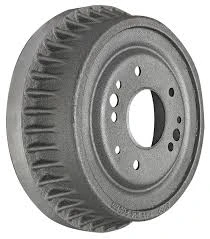
-
 Afrikaans
Afrikaans -
 Albanian
Albanian -
 Amharic
Amharic -
 Arabic
Arabic -
 Armenian
Armenian -
 Azerbaijani
Azerbaijani -
 Basque
Basque -
 Belarusian
Belarusian -
 Bengali
Bengali -
 Bosnian
Bosnian -
 Bulgarian
Bulgarian -
 Catalan
Catalan -
 Cebuano
Cebuano -
 Corsican
Corsican -
 Croatian
Croatian -
 Czech
Czech -
 Danish
Danish -
 Dutch
Dutch -
 English
English -
 Esperanto
Esperanto -
 Estonian
Estonian -
 Finnish
Finnish -
 French
French -
 Frisian
Frisian -
 Galician
Galician -
 Georgian
Georgian -
 German
German -
 Greek
Greek -
 Gujarati
Gujarati -
 Haitian Creole
Haitian Creole -
 hausa
hausa -
 hawaiian
hawaiian -
 Hebrew
Hebrew -
 Hindi
Hindi -
 Miao
Miao -
 Hungarian
Hungarian -
 Icelandic
Icelandic -
 igbo
igbo -
 Indonesian
Indonesian -
 irish
irish -
 Italian
Italian -
 Japanese
Japanese -
 Javanese
Javanese -
 Kannada
Kannada -
 kazakh
kazakh -
 Khmer
Khmer -
 Rwandese
Rwandese -
 Korean
Korean -
 Kurdish
Kurdish -
 Kyrgyz
Kyrgyz -
 Lao
Lao -
 Latin
Latin -
 Latvian
Latvian -
 Lithuanian
Lithuanian -
 Luxembourgish
Luxembourgish -
 Macedonian
Macedonian -
 Malgashi
Malgashi -
 Malay
Malay -
 Malayalam
Malayalam -
 Maltese
Maltese -
 Maori
Maori -
 Marathi
Marathi -
 Mongolian
Mongolian -
 Myanmar
Myanmar -
 Nepali
Nepali -
 Norwegian
Norwegian -
 Norwegian
Norwegian -
 Occitan
Occitan -
 Pashto
Pashto -
 Persian
Persian -
 Polish
Polish -
 Portuguese
Portuguese -
 Punjabi
Punjabi -
 Romanian
Romanian -
 Russian
Russian -
 Samoan
Samoan -
 Scottish Gaelic
Scottish Gaelic -
 Serbian
Serbian -
 Sesotho
Sesotho -
 Shona
Shona -
 Sindhi
Sindhi -
 Sinhala
Sinhala -
 Slovak
Slovak -
 Slovenian
Slovenian -
 Somali
Somali -
 Spanish
Spanish -
 Sundanese
Sundanese -
 Swahili
Swahili -
 Swedish
Swedish -
 Tagalog
Tagalog -
 Tajik
Tajik -
 Tamil
Tamil -
 Tatar
Tatar -
 Telugu
Telugu -
 Thai
Thai -
 Turkish
Turkish -
 Turkmen
Turkmen -
 Ukrainian
Ukrainian -
 Urdu
Urdu -
 Uighur
Uighur -
 Uzbek
Uzbek -
 Vietnamese
Vietnamese -
 Welsh
Welsh -
 Bantu
Bantu -
 Yiddish
Yiddish -
 Yoruba
Yoruba -
 Zulu
Zulu
Understanding the Functionality and Benefits of Electric Drum Brakes in Vehicles
Understanding Electric Drum Brakes
Electric drum brakes are an innovative braking technology that has gained traction in various automotive applications, especially in electric and hybrid vehicles. Unlike traditional hydraulic drum brakes that operate on hydraulic pressure, electric drum brakes utilize electric actuators to provide braking force. This technology not only enhances braking performance but also contributes to the overall efficiency of the vehicle.
How Electric Drum Brakes Work
The fundamental principle behind electric drum brakes is to replace the mechanical components that typically engage the brake via hydraulic fluid with an electric mechanism. In a standard drum brake system, when the driver presses the brake pedal, hydraulic fluid is forced through the system, which pushes brake shoes against the inside of a rotating drum, creating friction that slows down or stops the vehicle.
In electric drum brakes, the process begins when the brake pedal is pressed, activating an electronic control unit (ECU). The ECU sends a signal to electric motors located within the brake assembly. These motors engage the brake shoes against the drum. This system allows for precise control over the braking force, resulting in shorter stopping distances and improved vehicle stability.
Advantages of Electric Drum Brakes
1. Improved Performance Electric drum brakes offer quicker response times than traditional hydraulic systems. The electronic control mechanism allows for more precise modulation of braking force, which can adapt to different driving conditions and improve overall vehicle safety.
2. Enhanced Energy Efficiency Since electric drum brakes do not rely on hydraulic fluid, they can contribute to the enhanced energy efficiency of electric and hybrid vehicles. This results in less energy consumption and increased range for electric vehicles, making them more appealing to environmentally conscious consumers.
what are electric drum brakes

3. Reduced Maintenance Electric drum brakes can lead to lower maintenance costs. The absence of hydraulic components reduces the potential for leaks and failures. Furthermore, electric actuators typically have longer service lives compared to traditional hydraulic components, lessening the frequency of repairs.
4. Integration with Advanced Systems Electric drum brakes can easily integrate with various advanced driver-assistance systems (ADAS) and anti-lock braking systems (ABS). This integration allows for improved vehicle control and safety features, such as automatic emergency braking and adaptive cruise control.
Challenges and Considerations
Despite the numerous advantages, electric drum brakes are not without their challenges. One significant concern is the initial cost of the system, which can be higher than traditional braking systems due to the need for advanced electronic components. Additionally, questions remain about their performance in extreme temperatures and their long-term reliability under varied driving conditions.
Furthermore, as the technology is relatively new, standardization and regulatory approvals are still in progress, which may affect their widespread adoption in the automotive market. Manufacturers must also ensure that electric drum brakes meet or exceed safety standards to gain consumer trust.
Future of Electric Drum Brakes
As the automotive industry continues to evolve towards more sustainable practices, electric drum brakes signify an important advancement in braking technology. With ongoing research and development, manufacturers are anticipated to refine this technology further, leading to increased adoption in both electric and conventional vehicles. This shift could not only improve vehicle performance but also contribute significantly to the reduction of emissions and environmental impact associated with traditional cars.
In conclusion, electric drum brakes represent a significant leap forward in braking technology, promising improved safety, efficiency, and reduced maintenance. As this technology becomes more commonplace, it could redefine standards in the automotive industry, heralding a new era of advanced, sustainable vehicles on our roads.
-
What Are Drum BrakesNewsJul.07,2025
-
Understanding Brake Drum MaterialNewsJul.07,2025
-
Semi-Trailer Brake Drum: A Key Component for Extreme Loads and Long-Distance TransportNewsJul.07,2025
-
Drum Brake Pads for SaleNewsJul.07,2025
-
Brake Drums for SaleNewsJul.07,2025
-
Brake Drum ManufacturerNewsJul.07,2025
-
Aluminum Brake Drums: The Future of High-Performance CarsNewsJul.07,2025
